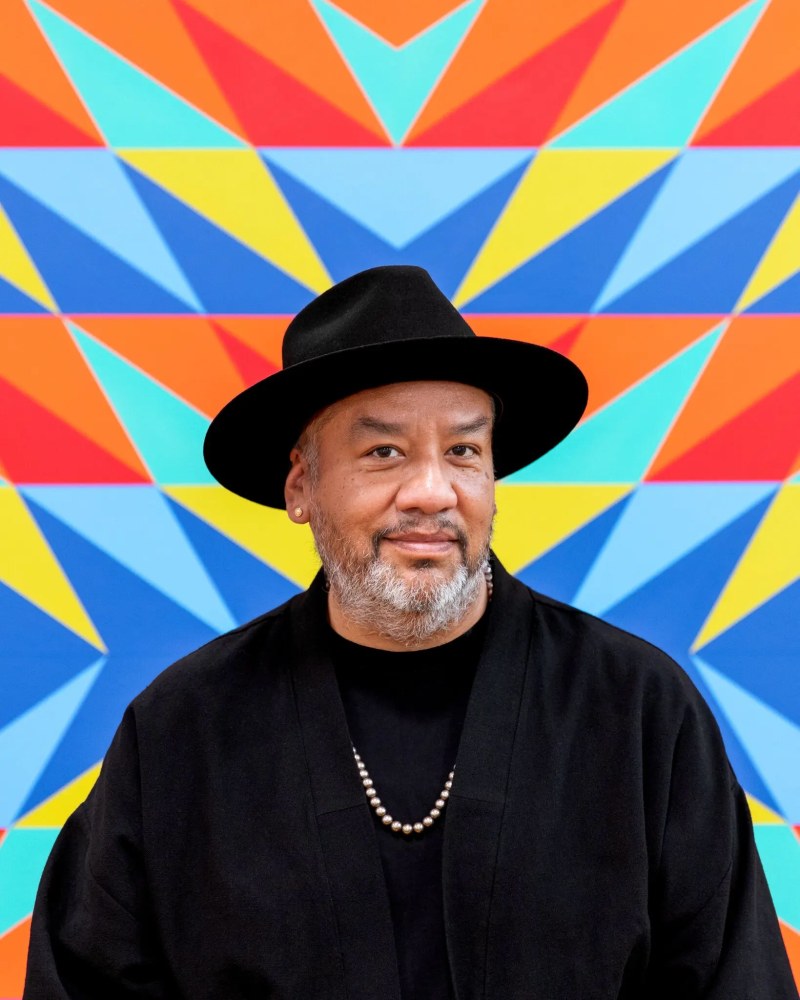

By Zachary Small
Jeffrey Gibson, a multimedia artist who challenges the absence of Native American practices in visual culture, will represent the United States at the next edition of the Venice Biennale.
He is one of the first Indigenous artists to represent the country at the Biennale, according to organizers with the State Department who selected Gibson for what is generally considered the art world’s version of the Olympics.
The artist’s Hudson Valley studio is working on a multimedia installation and performances that will open in April 2024 and be titled “the space in which to place me,” referring to a poem by Layli Long Soldier, a citizen of the Oglala Lakota Nation.
Gibson, who is a member of the Mississippi Band of Choctaw Indians and of Cherokee descent, said he wanted to build an art world that extended beyond mere representation for minorities and toward deeper opportunities for groups to create their own spaces and narratives.
“The last 15 years of my career have been about turning inward and trying to make something I really wanted to see in the world,” said Gibson, 51. “Now I want to expand the way people think about Indigeneity.”
From a young age, Gibson nurtured his artistic passion through punk music, raves and the powwow traditions of Native American tribes. He earned an arts degree from the School of the Art Institute of Chicago in 1995 and concentrated on painting during his graduate studies at the Royal College of Art in London three years later, which he attended thanks to a scholarship from the Mississippi Band of Choctaw Indians.
His first major exhibition at a museum came in 2013 with “Love Song” at the Institute of Contemporary Art, Boston. The show included a sculpture that stitched together seven painted drums, a recycled Army blanket strung on a flagpole and a bedazzled punching bag with hand-sewn beads. Six years later, his colorful textiles were standouts of the 2019 Whitney Biennial.
In May, the National Gallery of Art in Washington announced it had acquired one of his garments, which draws on Native American designs and inspiration from queer performers like the nightclub fixture Leigh Bowery.
Three commissioners will steer Gibson’s exhibition, including Kathleen Ash-Milby, a member of the Navajo Nation. She is the curator of Native American art at the Portland Art Museum in Oregon, which recently asked Gibson to transform its exterior windows into displays about local history.
Ash-Milby said she had dreamed of putting Gibson in the Venice Biennale since the 2000s, when she began her friendship with the artist. “I think it is tremendously important that a Native American artist is representing the United States,” she said.
Nearly a century ago, the Hopi artist Fred Kabotie was one of the Native American artists who represented the United States at the Venice Biennale in a 1932 group exhibition. Kabotie was known for painting images of ceremonial dances in the 1910s at the height of federal assimilation policies for Native Americans.
The excitement about Gibson was shared by the other commissioners, Louis Grachos, director of SITE Santa Fe, and Abigail Winograd, an independent curator who had her own epiphany after attending last year’s Venice Biennale show featuring the artist Simone Leigh.
“I called Jeffrey from the American pavilion last summer and said, ‘You should be here,’” Winograd said. “We all had a desire for a different kind of art world.”
Though specifics for Gibson’s exhibition in Venice remain a mystery, the artist said he was thinking about the economies of global trade and the disruption that colonization had on Native American culture.
“I see myself in a continuum of Indigenous making,” Gibson said. “I have been trying to imagine what that would look like if those disruptions hadn’t happened.”
The American pavilion will host several new works by Gibson and performances filled with other Indigenous musicians, poets and dancers. By using his platform to showcase other artists, he hopes to broaden the international audience’s understanding of Native Americans, their art and their culture.
“I hope people will think beyond the definition of what Indigenous people are — what we make, look and sound like,” Gibson added.